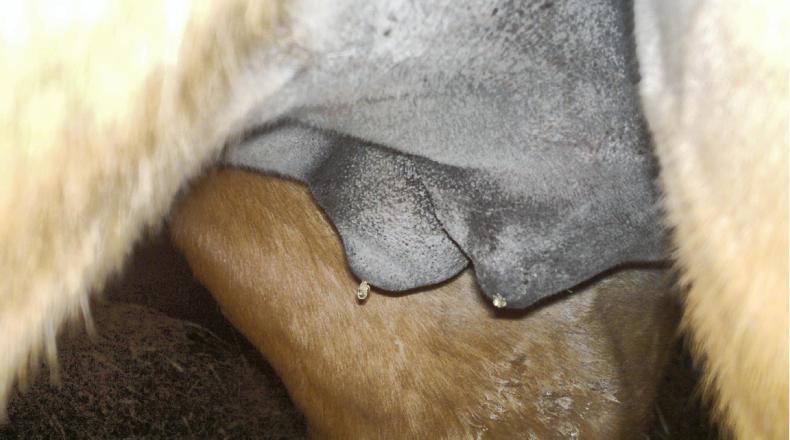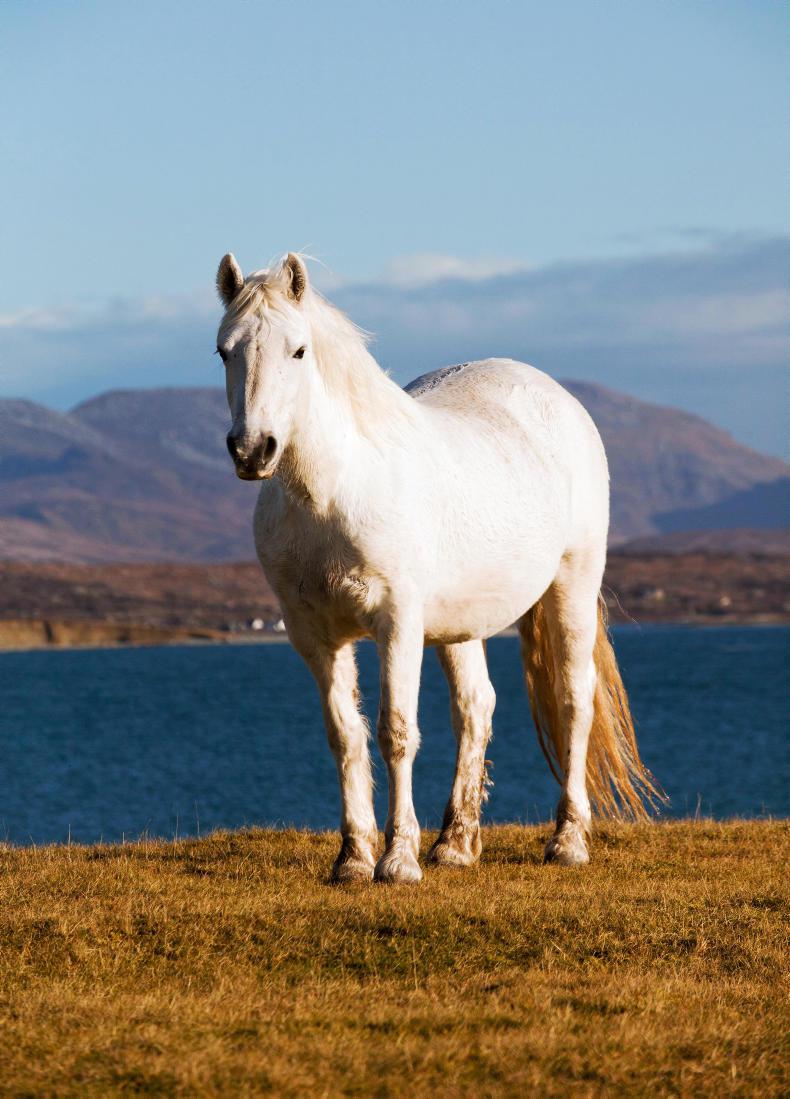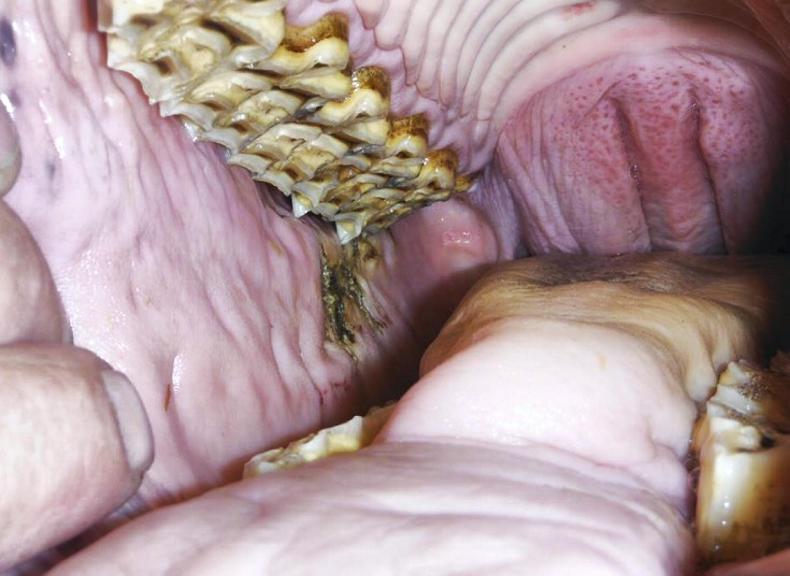THE role of broodmare nutrition on the future health of their progeny is well established and an area of ongoing scientific research. It is hardly surprising that maternal nutrition during pregnancy has a significant influence on the growth and development of the foetus in utero, as the growing foetus is dependent on the maternal supply of nutrients and the capacity of the placenta to provide an unrestricted supply of those nutrients.
Recent research indicates that these influences can be far reaching, not only affecting the newborn foal but also the foal’s long-term development and health.
Optimum, balanced levels of micronutrients, such as calcium, phosphorus, copper, zinc and manganese, are vital to support healthy growth and development of the foetus throughout pregnancy.
1. Copper considerations
Research has shown that copper has an important role to play in the repair of early Osteochondritis Dissecans (OCD) lesions in foals. As mares’ milk is low in copper, foals rely on copper stored in the liver during their development in utero.
Providing pregnant mares with optimum levels of copper in their diet will allow adequate reserves of copper to be stored in the liver of the foetus.
2. Bones need calcium
Calcium, is essential for the development of healthy, dense bones. It should be balanced with phosphorus in the ratio 2:1. “Straights” e.g. oats, are very low in calcium and the ratio of Calcium : Phosphorous is reversed. Therefore, if you are feeding “straights” to your pregnant mares it is vital to balance the ration for the major minerals vitamins and trace elements.
Feeding a top specification stud feed balancer will ensure that pregnant mares receive optimum, balanced levels of vitamins, minerals and trace elements necessary to support healthy development of the foetus throughout pregnancy. It will also ensure that the ration is balanced for calcium and phosphorus if you are feeding “straights”.
3. Good quality colostrum

Foals gain approximately 60% of their birth weight in the last three months of gestation. Therefore the mare’s requirements for good quality protein, rich in essential amino acids and to some extent energy will increase in late pregnancy to support this phase of rapid growth.
Mares start to produce colostrum over the last 3-4 weeks of pregnancy. Good quality colostrum is rich in antibodies and other immune factors that help protect the foal from infection over the first few weeks after birth as the foal’s own immune system continues to develop.
Research indicates that good levels of vitamin E, balanced with selenium, are required for the production of good quality colostrum. Good grass is an important natural source of vitamin E for horses, but levels of vitamin E drop rapidly once grass is conserved as hay or haylage.
Top-specification feed balancers contain generous levels of vitamin E and selenium to promote the production of good quality colostrum. Also look out for the inclusion of Mannan Oligosaccharide (MOS) which has been shown to support the production of good levels of IgG in the colostrum.
However, remember that without a high-quality base to the diet supplements will not be as effective. Therefore, the inclusion of specialised supplements in a top specification stud feed balancer is an ideal, cost effective solution.
4. Early lactation
The nutritional demands on the broodmare are greatest in early lactation, and during the first month foals will rely on mare’s milk for the majority of the nutrients to fuel their rapid growth. Foals usually double their birth weight in the first month. A 500kg mare will produce 15-20l of milk a day during early lactation.
Mares’ milk is rich in lysine and the other essential amino acids required by the foal to develop a healthy musculoskeletal system. Studies have shown that inclusion of a good quality protein source – soya is the best – in the feed, will improve milk yields and foal growth. Top specification feed balancers and conditioning “blends” use soya, which is rich in essential amino acids, as the major protein source.
5. Foot issues
Foot issues are the most common cause of lameness in broodmares so the inclusion of a hoof supplement in the feed balancer makes sense. The hoof supplement should include biotin at the scientifically recommended rate of 3mg/100kg bwt/day which, when combined with optimum levels of certain amino acids (e.g. methionine and cysteine), calcium, vitamin A, zinc, copper, iodine and soya oil will improve hoof and coat quality. The inclusion of pre and probiotics will improve fibre digestibility and support healthy hindgut function.
6. Practical Feeding advice
The uterus rapidly expands as the mare gets closer to foaling, therefore there will be less room in her abdomen for the digestive tract. This is likely to reduce her appetite. Feeding small, nutrient-dense feeds, no more than 2kg per meal for a 500kg mares is ideal. Large meal sizes reduce the efficiency of digestion and can contribute to digestive upsets. The benefits of feeding a forage-based diet are well established – broodmares should have access to grazing and ad-lib good quality forage as necessary.
If in doubt, consult an experienced nutritionist for advice.
Excellent nutrition, based on current scientific knowledge and combined with good management will help your broodmares maximise their potential producing strong, healthy foals.
MAINTAINING BODY CONDITION IS ESSENTIAL
It is important to assess your broodmare’s body condition regularly. At this time of year, when mares still have thick winter coats, you will need to be “hands on”, feeling the cover over their ribs, back and neck.
If you notice any unwanted change in condition the quantity of conditioning “blend” should be adjusted accordingly.
Various academic studies indicate that broodmares should be maintained in good condition during pregnancy, being over- or underweight is undesirable and may influence the future health of their progeny. Mares that are lean when they foal and those that lose weight in early lactation can be more difficult to get in foal again.
Struggling to maintain condition?

Wet conditions this winter have been challenging for some mares. The provision of ample, high-quality forage is essential for these mares. It must be palatable and nutritious. Ensure they have ad-lib access to hay or haylage in the field and stable.
When mares are managed in groups, providing several separate hay feeding stations can be useful. This will ensure that the “shy” mares as well as the “bossy” ones have free access to hay or haylage.
If additional protein and calories are required to support condition, look for a cubed “blend” that contains high-quality protein, rich in the essential amino acids lysine, threonine and methionine that are needed for growth. This should be balanced with additional calories principally from “super fibres” that are low in sugar and starch.
It may be necessary to add a small quantity of a flaked “blend” to tempt mares that become fussy feeders late in pregnancy or to allow meal sizes to be kept small in mares that have a high requirement for additional calories to maintain their condition. There is some evidence emerging that indicates using significant quantities of high starch products may adversely influence glucose metabolism in their foals after birth. The quantity of cubed or flaked “blend” should be adjusted according to condition provided the maximum meal size is not exceeded.
DEAL WITH DENTAL ISSUES
Basing the hard feed on a top-specification stud feed balancer is an ideal way to keep feed sizes small.
In addition to providing optimum levels of micronutrients to support pregnancy, lactation and fertility, a top-specification conditioning stud feed balancer will contain good quality protein, rich in essential amino acids such as lysine, threonine and methionine that are vital for growth and development

Issues with the teeth such as sharp edges, overgrowth of molars or diastema can contribute to lack of condition in mares. If your pregnant mare has struggled to maintain condition over the winter I would recommend that you have her teeth checked by your vet or a qualified equine dental technician.
Tooth problems can also increase the risk of colic. A recent study has shown that horses who “quid”, which is usually associated with teeth problems, were eight times more likely to develop colic due to a large colon torsion than those with good teeth.
This is particularly relevant for broodmares as the study also found that that mares are already 13 times more likely to develop a colon torsion than geldings or stallions, the highest risk period being the first three months after foaling.
Significant worm burdens can be another factor that affects condition. It is also important that your mares are on an effective worm control programme including worm egg counts and targeted worming for those worms not detected in worm egg counts e.g. encysted small redworms and tapeworms.
Good-doers
There is an increasing body of evidence indicating that mares that are overweight during pregnancy can adversely affect the future health of their progeny. Therefore, it is important to carefully manage the body condition of mares that do well on good quality forage. Feeding compound stud cubes or mixes at the rate required to provide adequate levels of micronutrients to support the healthy growth and development of the foetus will result in these mares becoming overweight.
Feeding a “lite” top-specification stud feed balancer provides the ideal solution for these mares. A low volume, nutrient dense low-calorie stud feed balancer will allow you to provide optimum levels of micronutrients and specialised supplements without promoting weight gain.
Article supplied by Sarah Stoneham BVSc, CertESM, MRCVS, Veterinary Nutritionist at TopSpec.
Sarah is available for advice on the TopSpec Multiple-Award-Winning-Helpline, free of charge, on 01845-565030(UK) or 062-85-401 (Ireland)